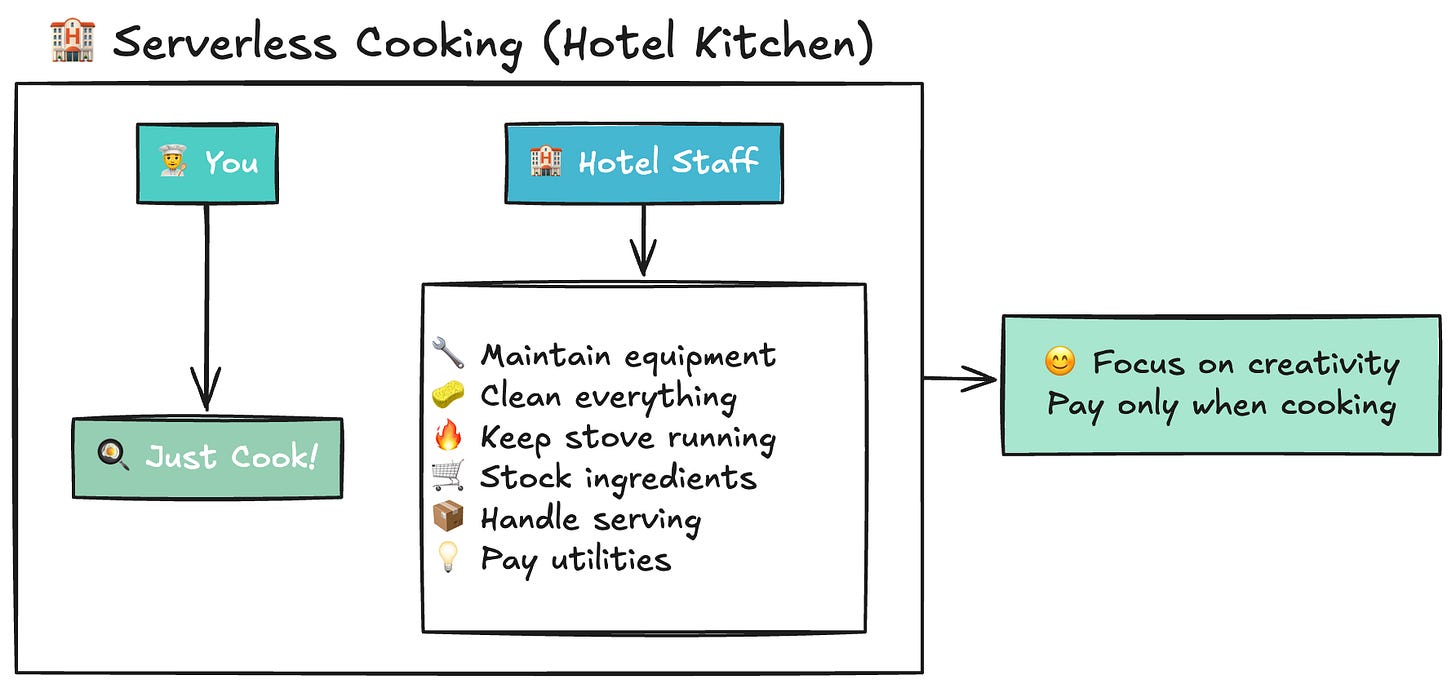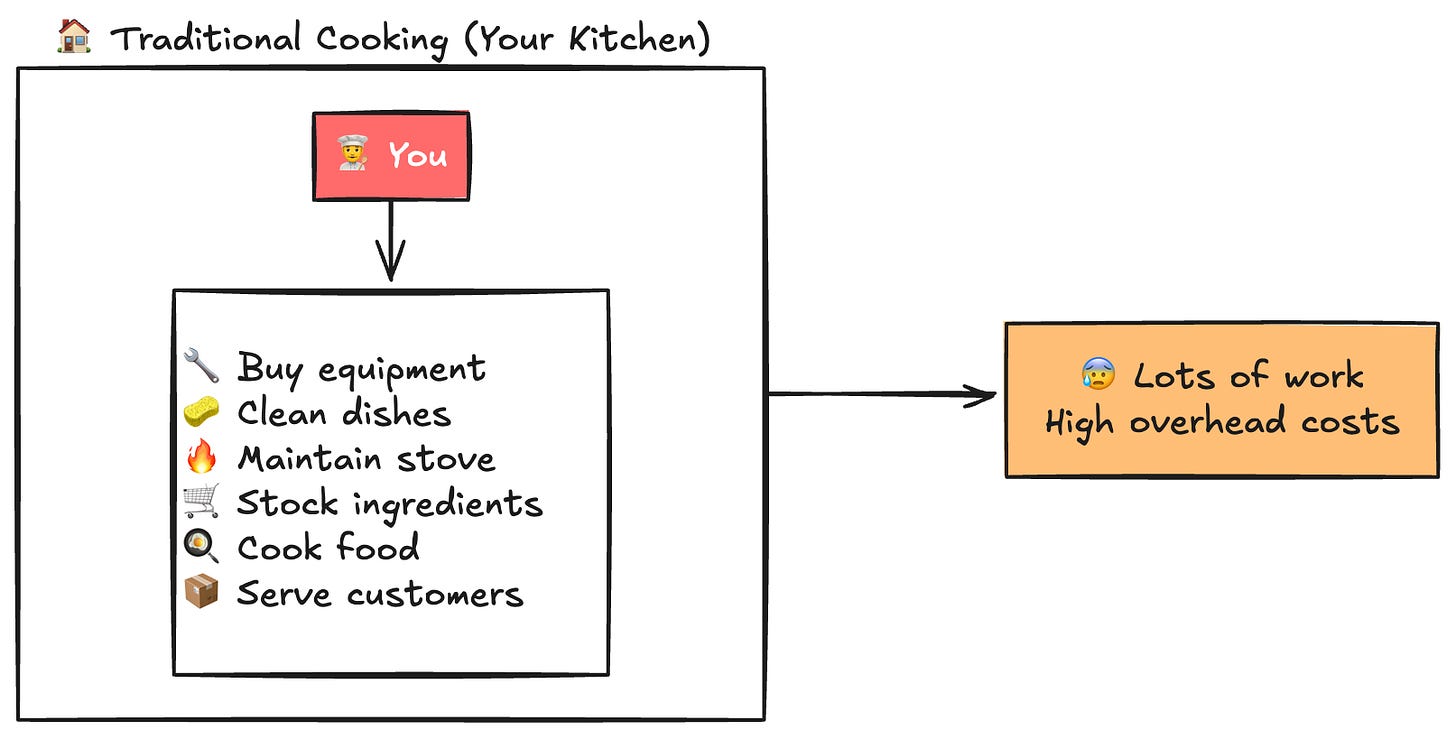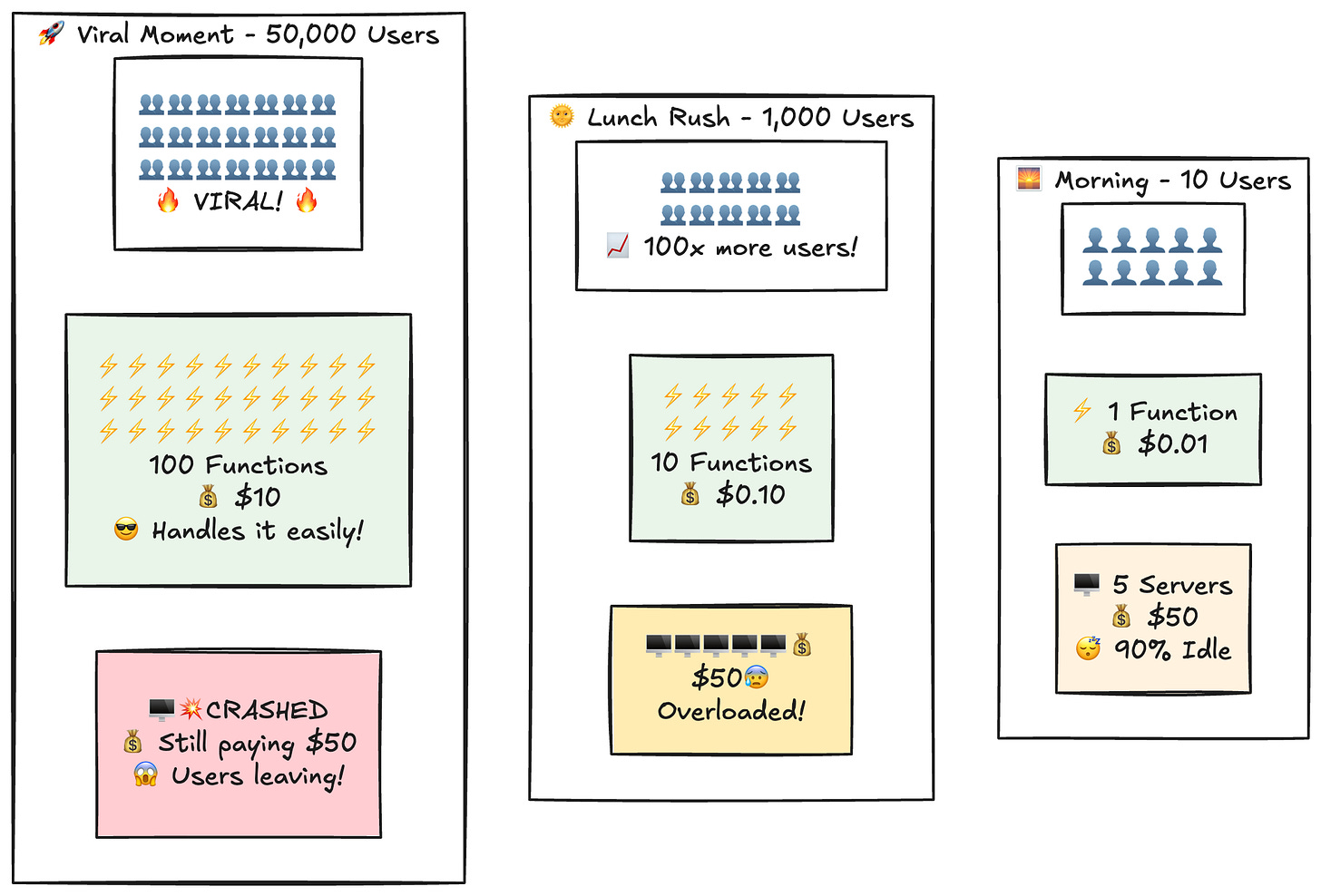WHY 90% OF DEVELOPERS GET SERVERLESS WRONG
#23 From Confused to Confident: Master Serverless in 10 Minutes
What if I told you there's a way to deploy code without managing servers, scale to millions of users automatically, and only pay for what you actually use? You'd probably think it sounds too good to be true. Most developers do. That's exactly why serverless remains one of the most misunderstood tools in our toolkit. Time to change that.
Quick heads-up: If you’re curious about architectural choices like serverless, you’ll love our YouTube video,
EP3: Why Monolithic Architecture is Better (and Why Microservices Fail)
It dives into how decisions like these shape your projects.
What Is Serverless, Anyway?
First off, let’s clear the air: serverless doesn’t mean “no servers.” That’s like saying “wireless” means no wires—servers are very much there, humming away in the cloud. The magic is that you don’t have to manage them.
Picture this: you’re a chef, and instead of worrying about keeping the kitchen stocked or the oven running, you just focus on cooking the perfect dish. That’s serverless in a nutshell.
In tech terms, serverless computing means cloud providers like AWS, Azure, or Google Cloud handle all the infrastructure—scaling, maintenance, security patches, the works. You write your code, deploy it, and boom, it’s live. No server provisioning, no late-night alerts about downtime. Just you, your code, and your ideas.
“Serverless is like renting a fully managed kitchen—you bring the recipe, and the rest is handled.”
— A developer friend, over coffee, explaining why they switched to serverless.
Why Serverless is a Developer’s Dream
So, why should you care? Let’s break down the real benefits that make serverless a game-changer:
Lightning-Fast Development: Spin up new features or even entire apps in minutes. No need to wrestle with server configs or wait for IT to approve your infrastructure request.
Scales Like Magic: Whether you’ve got 10 users or 10 million, serverless adjusts automatically. Traffic spikes? No problem. Quiet days? You’re not paying for idle servers.
Code, Not Chaos: Forget patching OS vulnerabilities or monitoring server health. Serverless lets you focus on what you love—writing code and building cool stuff.
This kind of speed and freedom is why developers are hooked. It’s like trading in a clunky old bike for a sleek electric scooter—suddenly, you’re moving faster with less effort.
Busting the Serverless Myths
Alright, let’s tackle the rumors swirling around serverless. You’ve probably heard a few of these, so let’s set the record straight:
Myth #1: “Serverless means no servers.” Nope! Servers exist, but they’re managed by your cloud provider. You’re not touching hardware—you’re coding, deploying, and iterating.
Myth #2: “It’s too complicated.” Not true. Tools like AWS Lambda, Azure Functions, or Google Cloud Functions make serverless accessible, even if you’re a solo dev or a small team.
Myth #3: “It’s only for tiny projects.” Wrong! Serverless powers everything from simple APIs to massive systems like streaming platforms or e-commerce giants.
With these myths debunked, serverless reveals itself as what it truly is: a powerful tool that simplifies development without sacrificing scale.
When Serverless Might Not Be Your Best Bet
Now, let’s be real—serverless isn’t perfect for every situation. Like any tool, it has its sweet spots and its limits. Here’s when you might want to pause and consider alternatives:
State-Heavy Apps: If your app needs to maintain state, like a multiplayer game server, serverless can get tricky. Long-running processes don’t always play nice with its event-driven model.
Cold Starts: Serverless functions can have a slight delay (called a cold start) when they haven’t been used in a while. For most apps, it’s no big deal, but if you need ultra-low latency, test carefully.
Vendor Lock-In: Each cloud provider’s serverless tools are unique, so switching from, say, AWS to Azure can be a hassle. Plan ahead to keep your options open.
Knowing these trade-offs helps you make smart choices—whether you’re going serverless or sticking with traditional setups.
The Future is Function-First
Serverless isn’t just about running a few functions—it’s a whole new way to build apps. Today’s serverless ecosystems include databases (like AWS DynamoDB), API gateways, and event-driven workflows, letting you create complex systems with minimal hassle.
Imagine prototyping a startup idea over a weekend, deploying it globally, and scaling it as users flood in. That’s the serverless promise.
This shift is empowering developers to think function-first—focusing on features and user value instead of infrastructure headaches. It’s like moving from building a house brick by brick to using pre-fab modules that snap together effortlessly.
Why You Should Jump on the Serverless Train
Serverless isn’t just a trend; it’s a fundamental shift in how we build software. It lets you move faster, innovate more, and deliver value without drowning in operational details. Whether you’re a solo coder, a startup founder, or part of a big enterprise, serverless gives you the tools to build scalable, efficient, and cost-effective apps.
So, next time someone mentions serverless, don’t dismiss it as hype. It’s not about “no servers”—it’s about no hassle. Ready to give it a shot? Or maybe you’re wondering how it fits into your next project?
Thank You for Reading!
Loved this? Hit ❤️ to share the love and help others find it!
Get weekly tech insights to code smarter and build your dev career. Subscribe to CoreCraft for practical tips and frameworks you can use today.
Have ideas or questions? Drop a comment—I reply to all! For collabs or newsletter sponsorships, email me at souravb.1998@gmail.com
Stay connected: Follow me on X | LinkedIn | YouTube
P.S.
P.S. Slow apps killing your projects? Grab my Cache Rules Everything: A Developer’s Guide to Faster Applications for pro caching techniques that 10x speed. Get it now. Peek at my top 3 optimization hacks for more dev wins!
P.P.S.
Creators: Promote your tech work to my readers! Email souravb.1998@gmail.com for collab or sponsorship spots.




